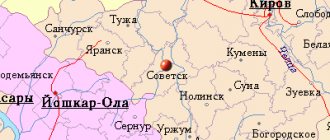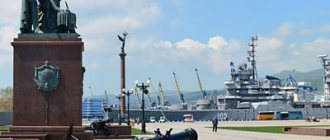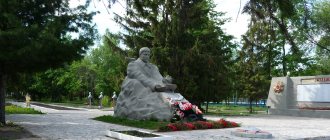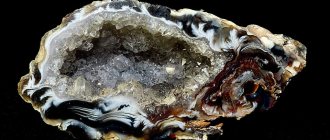This term has other meanings, see Suraj (meanings).
| City Suraj Coat of arms |
| A country | Russia, Russia |
| Subject of the federation | Bryansk regionBryansk region |
| Municipal district | Surazhsky |
| urban settlement | Surazhskoe |
| Coordinates | 53°01′00″ n. w. 32°24′00″ E. d. / 53.01667° n. w. 32.40000° E. d./53.01667; 32.40000 (G) [www.openstreetmap.org/?mlat=53.01667&mlon=32.40000&zoom=12 (O)] (Z)Coordinates: 53°01′00″ N. w. 32°24′00″ E. d. / 53.01667° n. w. 32.40000° E. d./53.01667; 32.40000 (G) [www.openstreetmap.org/?mlat=53.01667&mlon=32.40000&zoom=12 (O)] (I) |
| Chapter | Rykov Yuri Vitalievich |
| First mention | 17th century |
| Former names | Surazhichi, Surazh-on-Iputi |
| City with | 1781 |
| Square | 12.39 km² |
| Center height | 160 |
| Population | ↘11,089[1] people (2016) |
| Density | 935 people/km² |
| National composition | Russians, Belarusians, Ukrainians and others |
| Confessional composition | Orthodox and others |
| Names of residents | surazhan, surazhanin, surazhanka |
| Timezone | UTC+3 |
| Telephone code | +7 48330 |
| Postcode | 243500 |
| Vehicle code | 32 |
| OKATO code | [classif.spb.ru/classificators/view/okt.php?st=A&kr=1&kod=15254501 15 254 501] |
Audio, photo and video
on Wikimedia Commons
Suraj
- a city (since 1781[2]) in Russia, the administrative center of the Surazhsky district of the Bryansk region.
By Order of the Government of the Russian Federation dated July 29, 2014 No. 1398-r “On approval of the list of single-industry towns,” the city was included in the category “Single-industry municipalities of the Russian Federation (single-industry towns) in which there are risks of worsening the socio-economic situation”[3].
Story
According to unconfirmed reports, Surazh was first mentioned at the beginning of the 17th century. Originally it was a small village of Surazhichi
, part of the Mglinsky hundred of the Starodub regiment of the Hetmanate.
In 1781, with the abolition of the regimental-hundred system of the Hetmanate, the village of Surazhichi was transformed into a district town (original name: Surazh-on-Iputi
). By decree of June 4, 1782, the city was granted a coat of arms, which depicts “a bush of ripened hemp in a golden field, as a sign of the abundance of this plant, which residents trade with.”
In 1781-1796 - the center of the Surazh district as part of the Novgorod-Seversky governorship[2]. From 1797 to 1801 - a provincial town in Mglinsky district as part of the Little Russian province, and in 1801-1802 - as part of the Chernigov province. On February 27, 1803, it was restored to the rights of a district town, the center of the Surazh district as part of the Chernigov province.
In 1919, Surazhsky district was transferred to the newly formed Gomel province, and in 1921 the district center was moved from Surazh to Klintsy, and therefore the district became known as Klintsy. In 1926 it was transferred to the Bryansk province. Since 1929 it has been a regional center.
Map
| Surazh: cards |
Surazh: photo from space (Google Maps) Suraj: photo from space (Microsoft Virtual Earth)
| Suraj. Nearest cities. Distances in km. on the map (in brackets along roads) + direction. Using the hyperlink in the distance , you can get the route (information courtesy of the AutoTransInfo website) | |||
| 1 | Unecha | 26 (24) | SE |
| 2 | Gordeevka | 29 (65) | Z |
| 3 | Mglin | 30 (36) | IN |
| 4 | Klintsy | 31 (32) | YU |
| 5 | Zaimishche | 33 () | YU |
| 6 | Red Mountain | 53 (91) | Z |
| 7 | Starodub | 54 (55) | SE |
| 8 | Novozybkov | 62 (75) | SW |
| 9 | Kletnya | 68 (97) | NE |
| 10 | Pochep | 70 (80) | IN |
| 11 | Klimovo | 71 (89) | YU |
| 12 | Ershichi (Smolensk region) | 76 (233) | WITH |
| 13 | Fire | 76 (88) | SE |
| 14 | Zlynka | 78 (95) | SW |
| 15 | Zhiryatino | 91 (162) | IN |
| 16 | Shumyachi (Smolensk region) | 93 (233) | WITH |
| 17 | White Birch | 101 (155) | SE |
| 18 | Trubchevsk | 103 (120) | SE |
| 19 | Zhukovka | 105 (148) | NE |
| 20 | Dubrovka | 105 (149) | NE |
| 21 | Roslavl | 107 (197) | WITH |
| 22 | Vygonichi | 111 (134) | IN |
| 23 | Rzhanitsa | 111 (167) | NE |
| 24 | Rognedino | 115 (163) | NE |
| 25 | Glinishchevo | 116 () | IN |
| 26 | Seltso | 119 (171) | IN |
a brief description of
Located on the river. Iput (Dnieper basin), 177 km southwest of Bryansk. Railway station.
Territory (sq. km): 10
Information about the city of Surazh on the Russian Wikipedia site
Historical sketch
In the 17th century mentioned as the village of Surazhichi, later a settlement. Since 1781, the district town of Surazh-on-Iput of Novgorod-Seversky governorship, in 1796-1802. in the Little Russian province. Since 1797, the name Surazh was adopted. Since 1802 in the Chernigov province.
There is a possible connection between the name and the Russian dialect suroshka, surozhka “damp, low-lying, wooded area.” From the base of the term surozh-, using the suffix -ichi, the primary form of the oikonym Surazhichi was formed, indicating the inhabitants of this wetland.
In 1856, in the district town of Surazh, Chernigov province, there was 1 church, 139 houses, 43 shops.
In 1894, a cardboard factory was built in the city, in the 1920-30s. the factory was expanded.
During the Great Patriotic War of 1941-45, Surazh was occupied by Nazi troops on August 17, 1941. It was liberated on September 25, 1943 by troops of the Bryansk Front during the Bryansk operation.
Economy
Cardboard, clothing factories. Brickworks. Fruit and vegetable plant, butter and cheese plant, bakery.
In the Surazhsky region, potatoes, rye, barley, oats, vegetables (carrots, cabbage), and fodder beets are grown. Cattle, sheep, and pigs are raised.
Peat and gravel deposits.
Main enterprises
LIGHT INDUSTRY
JSC "Surazhanka"
243500, Bryansk region, Surazhsky district, Surazh, st.
Belorusskaya, 37 Offers:
Women's winter coats, demi-season coats, men's cotton jackets
Museums, galleries, exhibition halls
Surazh Museum of Local Lore 243500, Bryansk region, Surazhsky district, Surazh, st. Lenina, 73
Architecture, sights
8 km from Surazh, in the village of Lyalichi, are the remains of the palace complex of Count P.V. Zavadovsky, favorite of Catherine II (1780-90s; project by architect G. Quarenghi).
| Population by year (thousands of inhabitants) | |||||||
| 1856 | 3.1 | 1989 | 12.6 | 2006 | 11.8 | 2015 | 11.2 |
| 1897 | 4.0 | 1992 | 12.8 | 2007 | 11.8 | 2016 | 11.1 |
| 1926 | 5.8 | 1996 | 13.0 | 2008 | 11.8 | 2017 | 11.0 |
| 1931 | 5.9 | 1998 | 12.9 | 2010 | 11.7 | 2018 | 10.9 |
| 1939 | 9.0 | 2000 | 12.8 | 2011 | 11.6 | 2019 | 10.8 |
| 1959 | 8.5 | 2001 | 12.7 | 2012 | 11.6 | 2020 | 10.7 |
| 1970 | 10.3 | 2003 | 12.0 | 2013 | 11.7 | 2021 | 10.6 |
| 1979 | 10.6 | 2005 | 11.9 | 2014 | 11.2 | ||
Attractions
In the central part of Surazh, individual buildings dating back to the late 19th and early 20th centuries have been preserved. A unique symbol of the city can be called a small but very elegant chapel-tomb, built in 1907 in the city center by order of the local nobleman Ivan Isaev over the grave of his untimely departed wife Elena. In popular memory, the chapel is associated with the more famous family of Surazh nobles, the Iskritskys, which is why in literature today it is often referred to as the “chapel-tomb of the Iskritskys.”
The picturesque banks of Iput near Surazh are a favorite vacation spot for townspeople.
10 km east of the city is the village of Lyalichi - the former estate of Count P.V. Zavadovsky, where the estate palace and the majestic Catherine Church (the architect of both projects was Giacomo Quarenghi), as well as a badly neglected English-style park surrounding the estate, are partially preserved.
Suraj
“I admire ruins like mine”
Frederic Beigbeder
Liked!
4
4
Author: DK1974
I haven’t yet finished my story about the recent Tver weekend, but I’ve already gone to a new one. This time to the Bryansk region.
Liked!
3
3
Author: DK1974
The voyage happened thanks to the quarantine weekend. At the same time, I did not violate any moral principles. Firstly, my wife and I are vaccinated. Secondly, traveling by car turned out to be truly anti-Covid. During all 3 days, no more than five people contacted us.
Liked!
4
4
Author: DK1974
So, on Saturday at 6 am we started from Tula. You can get to the Bryansk region by different routes. In terms of distance they are approximately the same. The whole question is whether you need to look at something along the way.
Liked!
5
5
Author: DK1974
I needed it, but until recently I didn’t know how I would go. I made the decision to go through Kaluga in the morning. The day before I was reading information about different places and I was inspired to visit the village of Przemysl (number 1 on the map). Until 1925 it was a city.
Liked!
4
4
Author: DK1974
According to historian Tatishchev, the city was built in the 12th century by Prince Yuri Dolgoruky and named in honor of Galician Przemysl. Here I photographed the Church of the Nativity of the Blessed Virgin Mary.
Liked!
4
4
Author: DK1974
Well, and of course, I found Vladimir Ilyich. In almost every locality I saw a monument to Lenin. Now the collection has expanded significantly.
Liked!
4
4
Author: DK1974
But the main purpose of coming to Przemysl was different. I wanted to see the ruins of the Assumption Cathedral, built in the 16th century. It was extremely unusual to climb an ancient monument all alone at 7 am.
Liked!
4
4
Author: DK1974
The Chetverik cathedral is the oldest building in the Kaluga region, along with the cathedral of the Vorotyn Monastery. Built on their lands by the Baryatinsky princes.
Liked!
3
3
Author: DK1974
There are several versions regarding the time of construction of the cathedral, but currently most researchers agree that it was built in the era of Ivan the Terrible.
Liked!
4
4
Author: DK1974
The temple ensemble also includes a bell tower built in 1784 and a refectory built in 1871. At the end of the 19th century, the Russian architect M. T. Preobrazhensky carried out measurements of the cathedral and proposed a restoration project.
Liked!
2
2
Author: DK1974
In 1931 the temple was closed. In 1961 it housed a sausage shop. In 1972, the cathedral's vaults collapsed.
Liked!
3
3
Author: DK1974
In 1990–1992, a project for its restoration was developed. Currently, the cathedral is in ruins and is in dire need of urgent conservation work.
Liked!
2
2
Author: DK1974
Let's move on. Another location in the Kaluga region is the Kazan Amvrosievskaya Hermitage (number 2).
Liked!
5
5
Author: DK1974
This is a convent located near the village of Shamordino, 12 km north of the famous Optina Pustyn.
Liked!
4
4
Author: DK1974
Basically everyone calls this place the Shamordino Monastery. The founding day of the monastery is considered to be October 1, 1884.
Liked!
5
5
Author: DK1974
There is an observation deck on the road to the monastery. I think in winter the view of the surrounding area will be quite boring.
Liked!
2
2
Author: DK1974
The last point in the Kaluga region was the settlement of Sukhinichi (number 3). The village was first mentioned in 1444 in the metrics of the Grand Duchy of Lithuania. Since 1840, Sukhinichi became a city.
Liked!
1
1
Author: DK1974
Until the 20th century, Sukhinichi was never an administrative center and did not have the status of a district town and belonged to those very few Russian cities that built themselves, thanks to the development of economic life, and were not built for military or administrative needs.
Liked!
4
4
Author: DK1974
Well, then exactly 100 kilometers later we entered the Bryansk region. There was still 45 km left from the border of the two regions to Bryansk itself.
Liked!
2
2
Author: DK1974
But, the first night I booked in another city. Since the road passed through Bryansk, I decided not to put it off until later and stopped by to see the main attraction not only of the capital, but of the entire region. This is the Svensky Assumption Monastery (number 4 on the map).
Liked!
3
3
Author: DK1974
Founded, according to legend, in 1288 by the Bryansk prince Roman Mikhailovich. Legend has it that the prince suddenly began to lose his sight. For healing, he sent to the Kiev Pechersk Monastery for a miraculous icon - the Pechersk Icon of the Mother of God.
Liked!
4
4
Author: DK1974
While traveling along the Desna, the icon miraculously disappeared from the boat and ended up on the banks of the Svin River (from the 17th century - Sven), where the prince came.
After praying in front of the icon, he was healed. At this place, he ordered to found a monastery, cut down a temple in the name of the Mother of God, and endowed it with lands. Based on the name of the Svini River, the monastery was called Svinsky until the 17th century.
Liked!
4
4
Author: DK1974
The architectural ensemble of the monastery belongs to the Sloboda Baroque tradition. In 1679, the gateway Church of Sretenskaya was erected, which has survived to this day. Many Russian sovereigns visited here several times, including Ivan the Terrible and Peter the Great.
Liked!
4
4
Author: DK1974
We say goodbye to Bryansk for a while. We should return here tomorrow evening, and now we are going to the western part of the region. The first settlement we saw was the city of Pochep (number 5). Surprisingly, there are a lot of Soviet paraphernalia left in these parts. The hammer and sickle often came across our path.
Liked!
3
3
Author: DK1974
Pochep was a guard fortress during the 16th–17th centuries. The city has been mentioned in Russian written sources since 1489. Some historians have an assumption that it existed under a different name during Batu’s invasion, but was destroyed by the Tatar-Mongols and disappeared from the chronicle for 263 years.
Liked!
4
4
Author: DK1974
After 48 km we enter the town of Mglin (number 6). Mglin is a border town, one of the ancient Russian, epic cities of Russia. Founded by the Smolensk prince Rostislav Mstislavovich (1108–1167) as an advanced fortress-outpost of the southern borders of the Smolensk (Mstislav) principality during the campaign of the holy prince to the northern lands of the Radimichi in 1142.
Liked!
0
0
Author: DK1974
The city is home to the huge stone Cathedral of the Assumption of Our Lady (1815–1830) in the style of late classicism, built in honor of the victory over Napoleon. The city also has ancient churches of St. Barbara and St. Nicholas the Wonderworker.
Liked!
4
4
Author: DK1974
After another 25 km, we finally reached the planned attraction - the village of Lyalichi (number 7). Since 1775 - the estate of Catherine II's favorite Count P.V. Zavadovsky, under whom it also bore the name Ekaterinodar.
Liked!
2
2
Author: DK1974
There are two notable objects here. The abandoned estate is an outstanding monument of Russian architecture and landscape gardening art of the Classical era. It is for her that we came here.
Liked!
1
1
Author: DK1974
The estate fell into disrepair beginning with Zavadovsky's death in 1812. At the beginning of the 20th century, multiple changes of owners led to the loss of most of the garden buildings and interior decoration.
Liked!
2
2
Author: DK1974
The most popular story that is told about this estate says that Paul I, after the death of Catherine, learned from “well-wishers” that the palace of Count Zavadovsky was much higher than the Mikhailovsky Palace.
Liked!
1
1
Author: DK1974
In those old days, it was considered bad manners to have buildings higher than those of royalty. Zavadovsky found out that they were coming to him with an inspection, and ordered the first floor of his palace to be buried. This was done in one night.
Liked!
1
1
Author: DK1974
A huge palace of the late 18th century in the small village of Lyalichi, Bryansk region, where did it come from?
Once Pyotr Zavadovsky participated in a discussion of a project for the construction of an assignation bank in St. Petersburg, and he really liked it. Having learned about this, Catherine II commissioned Giacomo Quarenghi to design a palace for the count. Most likely she paid for its construction.
Liked!
1
1
Author: DK1974
Giacomo Quarenghi designed more than a dozen buildings in St. Petersburg, for example, the Smolny Institute, the Hermitage Theater, and the Alexander Palace in Tsarskoe Selo. Such an elite architect is a unique case in Lyalichi.
Having seen the design of his future palace, Peter Zavadovsky noticed that it was too big for him. But Catherine insisted on implementing Quarenghi’s plan: “I want it that way!”
Liked!
2
2
Author: DK1974
To deliver bricks to Lyalichi, Zavadovsky lined up several thousand serfs in rows to the Unechi brick factory. A human chain of people stood for 30 km. For several months, serfs passed bricks for the construction of the palace from hand to hand.
Liked!
2
2
Author: DK1974
The architecture of the estate dates back to the era of mature classicism. The decoration of the palace was very expensive - gilded stucco, artistic wall paintings, marble statues and busts, silk tapestries, paintings, valuable types of wood and stone, leather, gold and silver dishes, crystal.
Liked!
3
3
Author: DK1974
Peter Zavadovsky was proud of his Lyalichsky estate. The estate of 15 hectares includes rotundas, alleys, statues and gazebos, stables and artificial ponds.
The count's gardens and greenhouses abounded in exotic plants. Zavadovsky even managed to grow pineapples. He loved them so much that he ordered pineapples to be fermented and added to borscht.
Liked!
2
2
Author: DK1974
In the 21st century, almost nothing remains of the beautiful palace. The fate of the estate was very sad. After the death of Pyotr Vasilyevich, no one cared about the estate like its first owner.
Zavadovsky's son, who inherited the estate, was not very successful in business. He soon sold the family estate to the Engelgart family, and according to some rumors, he completely lost at cards.
Liked!
0
0
Author: DK1974
It is very expensive to maintain such a large palace. In 1847, Baron Cherkasov became the new owner of the estate. But he didn’t stay here long either. By the 20th century, the estate had changed three more owners. The once rich and beautiful estate fell into disrepair. Expensive interior elements and valuables were gradually sold off. Source
Liked!
0
0
Author: DK1974
Not far from the ruins of the estate (less than a kilometer), be sure to visit the unique Church of St. Catherine.
Liked!
1
1
Author: DK1974
Its architecture is uncharacteristic for the Bryansk region. It is believed that the temple resembles the Alexander Palace in Tsarskoye Selo. As you can see, the central part has been restored.
Liked!
5
5
Author: DK1974
The church was built by Zavadovsky in honor of his beloved patroness Catherine II. The large-scale structure was built in a very short period by old standards, just 4 years (1793-1797).
Liked!
1
1
Author: DK1974
After Lyalichi, we decided to drop into the ancient city of Surazh (number 8). It is only 14 km from the border with the Republic of Belarus. Initially, we didn’t plan to come here, but on the same day I accidentally read a story on the Internet and we were drawn here.
Liked!
0
0
Author: DK1974
“A little more than a century ago, in memory of his suddenly deceased wife, a chapel-tomb was built, which is now a decoration of the city center.
It seemed that the happiness of the Surazh nobleman Ivan Isaev was limitless when he met a young beautiful girl Elena. The wedding was played and only six months of a cloudless, happy life... Then Elena Andrianovna fell ill, even Moscow doctors could not save her. Literally a month later she died. The nobleman was unable to realize that he was no longer loved. Isaev asked the doctors to embalm the body of the deceased. Even contemporaries composed legends about the love of the noble couple Elena and Ivan Isaev. And when Elena died, her husband wanted her body to be in a crystal coffin, ordered from Dyatkovo. Liked!
5
5
Author: DK1974
Ivan’s relatives carried the coffin with her body in their arms from the Unecha station to Surazh for four days, and on these days the bells rang throughout the area in all the churches.
And at this time, in the center of Surazhsky district, a tomb was being completed, where this coffin with the body of the deceased, mounted on chains, was later placed. Every day in the chapel the priest said prayer. Only in 1921 the coffin was destroyed and the remains were thrown into the street. The chapel was restored for the centennial anniversary. The townspeople collected funds for the revival of the chapel-tomb, built in memory of a girl who passed away early and a beautiful love story.” Liked!
4
4
Author: DK1974
Having traveled 500 kilometers from home, I was of course a little tired, so I really wanted to get to the final point of today as quickly as possible. 35 km from Surazh and we are in the city of Klintsy. This is where I booked our hotel.
Liked!
1
1
Author: DK1974
Since it was not yet dark, I decided to drive around a little and see the second most populous city in the Bryansk region. But I will tell you about it in the next part and tell you about a further, even more interesting route. Thank you for your attention!
Liked!
4
4
Author: DK1974
Chip flights
Find a hotel






